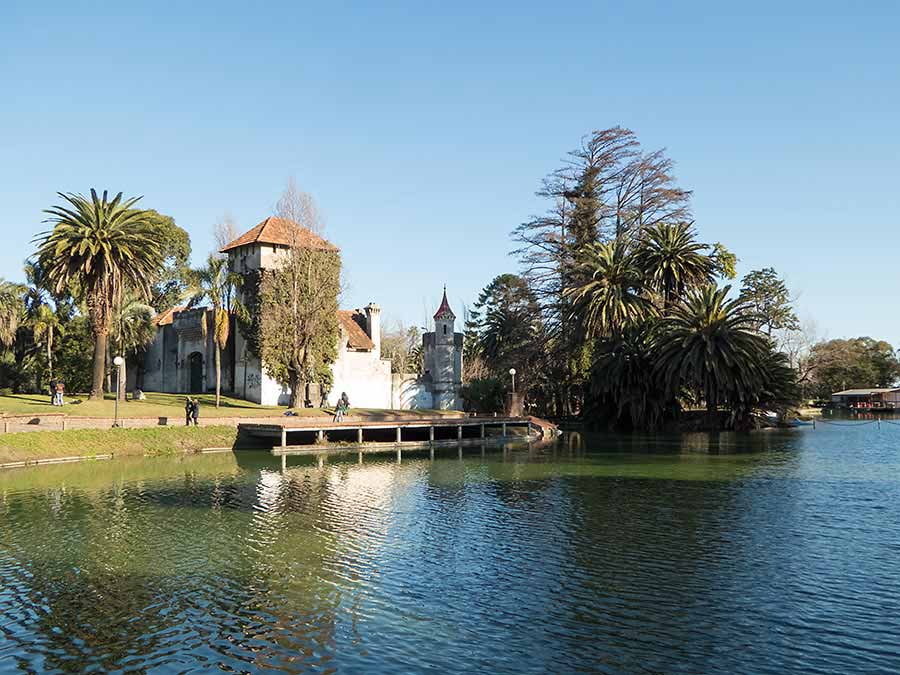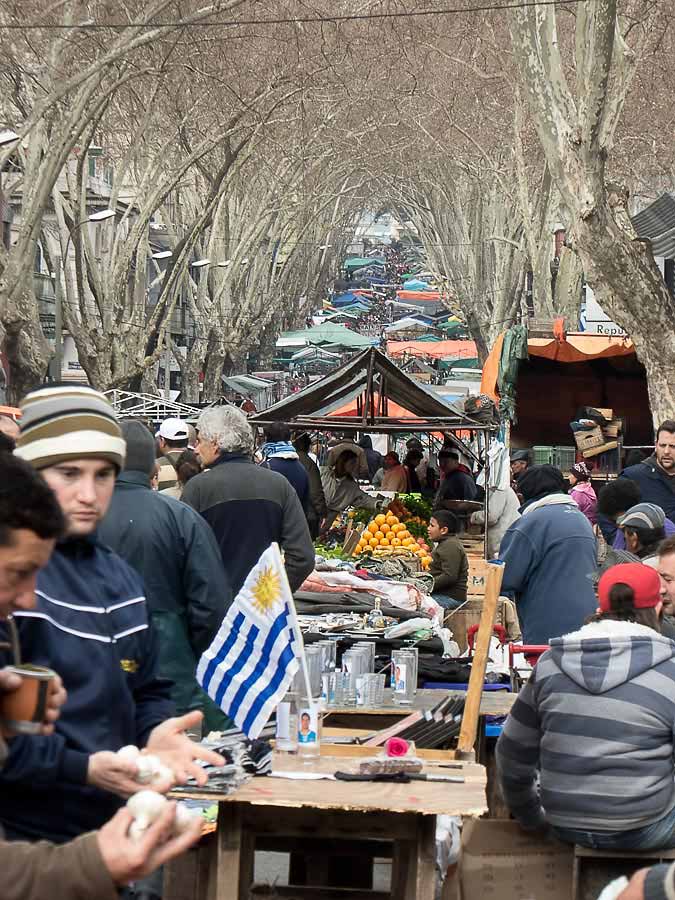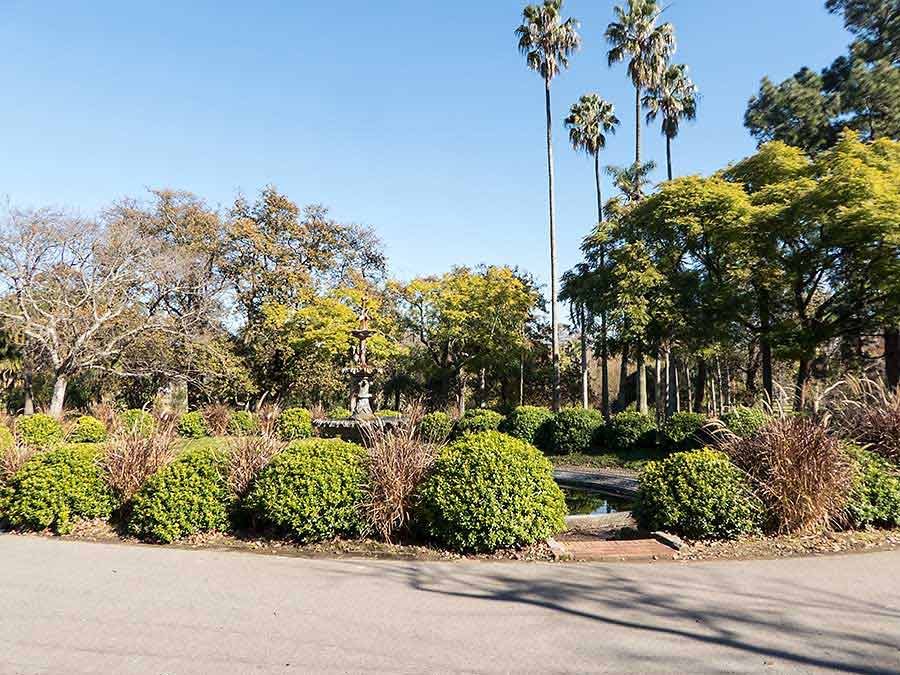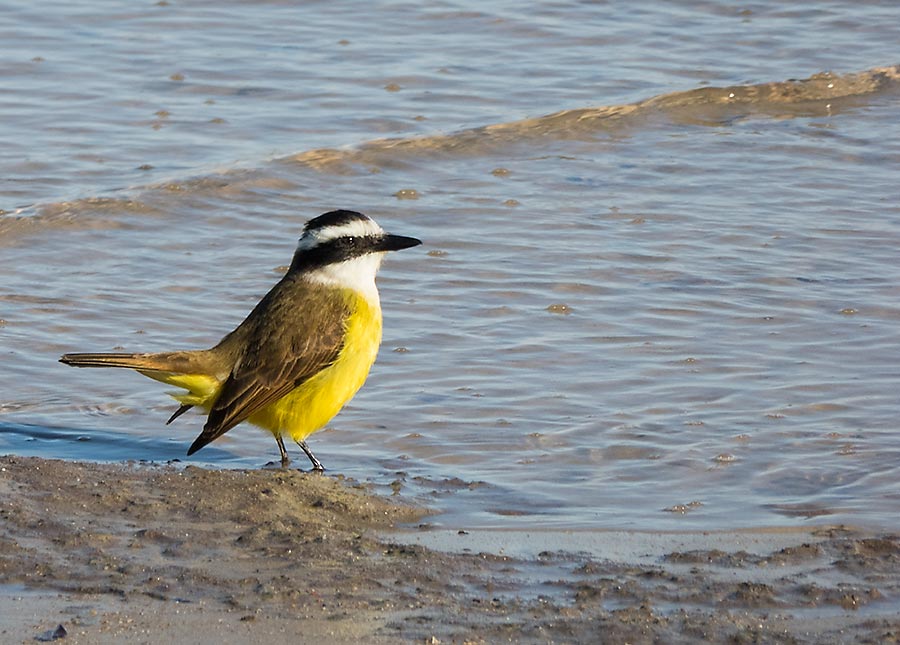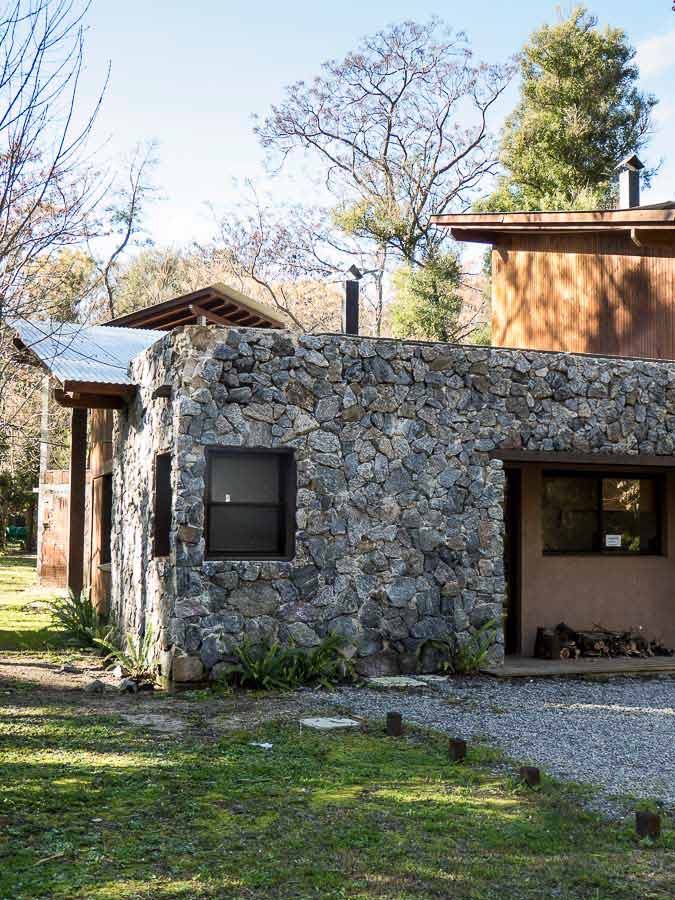Winter in Uruguay

|
Three months after our return to
the UK we finally got the OK to return to Lynn Rival. Rachel's shoulder
needed keyhole surgery to repair a tendon so it will take
time to recover. Passage-making
is off the cards, forcing us to postpone our planned return
to Brazil. With summer approaching in England it was a bit of a shock to return to the chilly winter here on the River Plate. There are some plus points, like exchanging a high pollen count for clear autumnal air, but we'd rather be closer to the warmth of the tropics.
But all was well and we found Lynn Rival looking comfortable, if a bit dusty, on her mooring in Puerto Sauce. The port has (almost) filled up with yachts overwintering here. Only a couple of owners are aboard - hardy long-term live-aboards. Our next challenge was to find somewhere to stay nearby, as living on Lynn Rival would be hard on the recovering shoulder (and decidedly cold without heating). We scoured the area around Juan Lacaze (the town at Puerto Sauce), hoping to find a holiday home to rent. Although a beautiful coastline with long sandy beaches, there are few hotels east of the tourist hub of Colonia - some 30 miles away - and hardly any are open at this time of year. Luckily we found a hosteria open at Santa Ana, a pretty coastal settlement just 10 miles to the west. The setting is lovely with pine and eucalyptus woods all around. It's a great place for walks along the beach in the winter sunshine. On wet days we huddle around a log fire. With tiled floors and high ceilings the buildings here are built for the summer heat rather than the chilly winters. Log fires and thick woollies, even wearing hats and gloves inside, are the predominant way of keeping warm here! 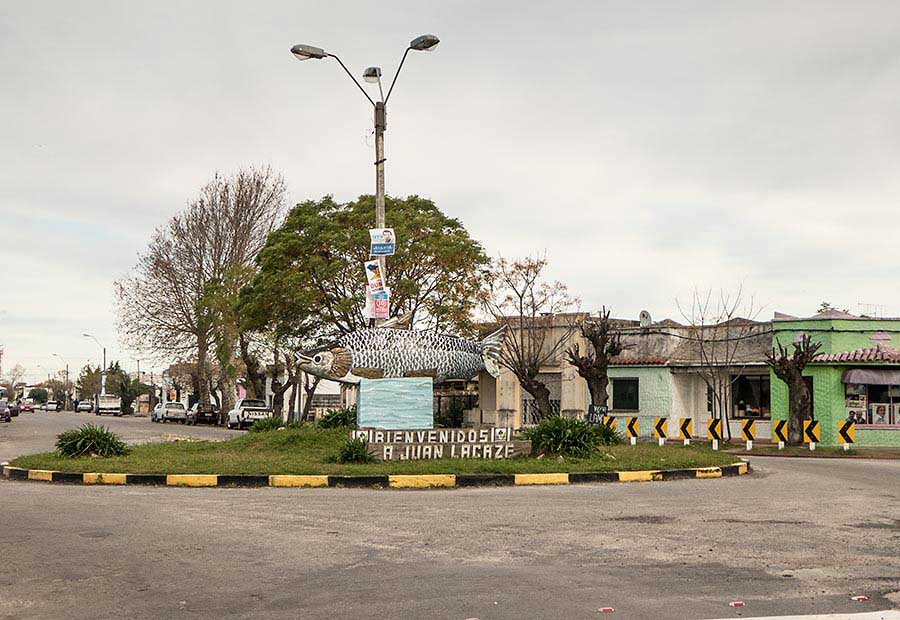 Fishing is far from the major occupation in Juan Lacaze, but I guess a model of the paper factory would be less attractive
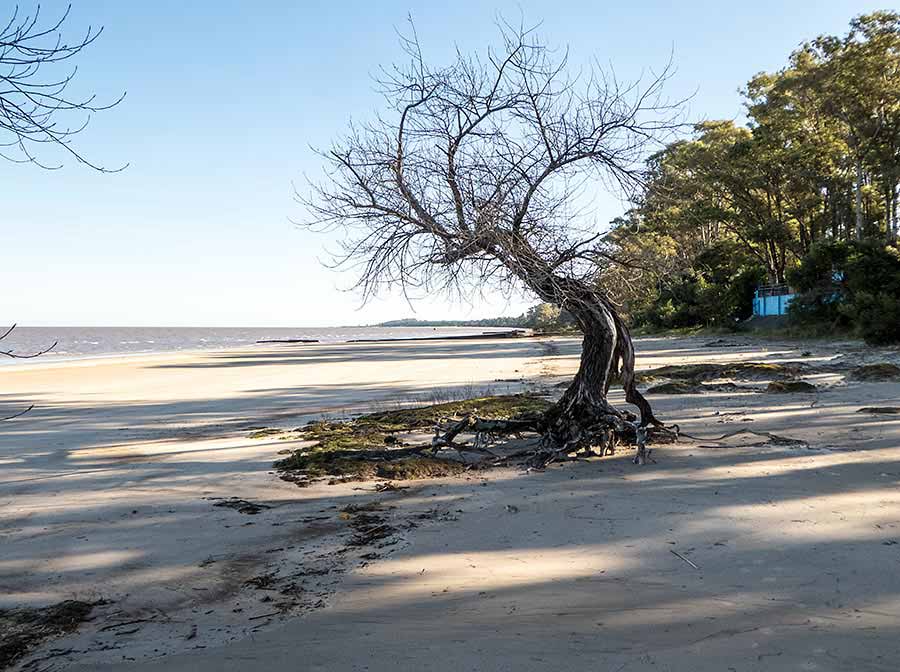 'Our' beach, between Santa Ana and El
Ensueno Apart from the occasional village-cum-holiday home development along the coast, dairy farming dominates the countryside. We are often stopped on the road to Juan Lacaze by a vast herd of cows crossing the road to the milking parlour. We haven't seen any gauchos around but it's common to see ponies and carts trotting along the road - mostly carrying firewood - on the outskirts of Juan Lacaze. Uruguayans are passionate about football and we've not been able to escape World Cup fever. We casually watched the early games and the premature demise of England. On the day of the Uruguay-England match we drove to Montevideo for a 9-day visit, making sure we got there before the mid-afternoon shutdown (for the game).
We stayed in a small townhouse close to Park Rodo, owned by a musician who we contacted via Airbnb. It was nice to stay in a real home rather than a hotel. Some days were sunny but others wet, and Paul was suffering from a cold, so our sight-seeing was a bit curtailed. Sunday was bright so we visited the famous Tristan Navaja street market with it's incredible array of bric-a-brac and handicrafts as well as fresh produce and the usual cheap and nasty imports.
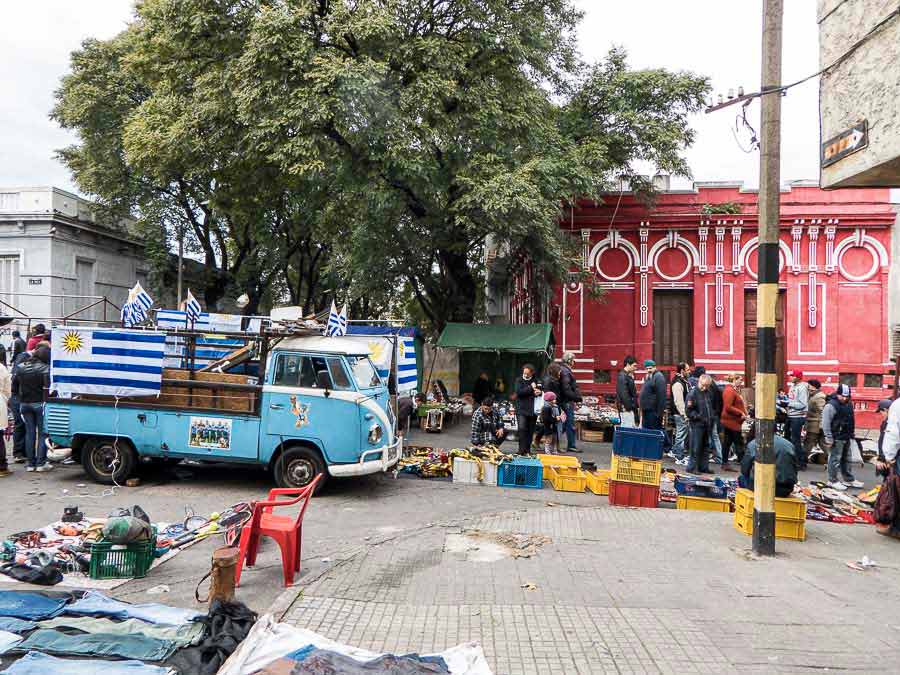 and the national flag was very much in evidence  but the streets were deserted ten minutes before kick off  The less interesting architecture nevertheless provides a canvas  A wet and misty morning, outside our apartment 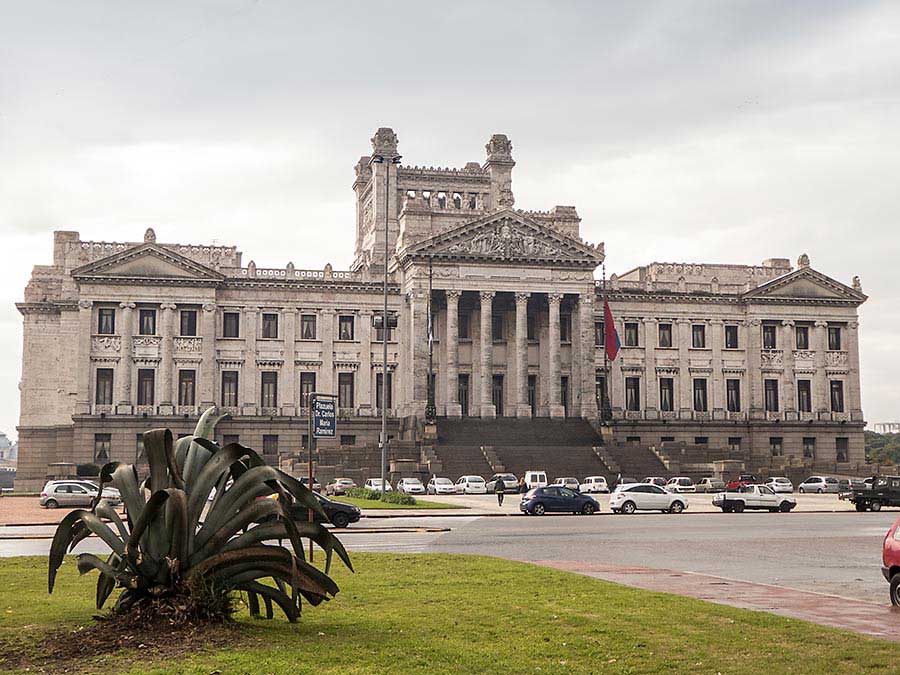 But, undaunted, we made our way up the hill to the seat of government
Looking over
the harbour towards downtown, from El Cerro, the hill
which gave Montevideo it's name
Our main excuse for visiting Montevideo was to collect a replacement solar panel for the boat, so we drove to Puerto Buceo one afternoon to visit the chandlery there. We found driving and walking around Montevideo a relatively pleasant experience. Like the rest of Uruguay it's a laid back place. Drivers are generally considerate and stop for pedestrians at junctions. However it was noticeable that in the midday rush to get home for the start of the football everyone was decidedly more tetchy! Before leaving for Montevideo we'd negotiated to rent a "cabana", a small holiday bungalow in a development called El Ensueno, close to the hosteria at Santa Ana. We drove back in fog and reached our new place in time to watch Uruguay get knocked out of the World Cup so more gloom descended over the land.
The cabana is recently built and very comfortable, though a bit far from the beach - a 5 minute walk! We've now settled in, with a log fire permanently burning in the hearth, and on sunny days - between watching the football, Wimbledon and the Tour de France - make time to visit Lynn Rival. PS. A technical note. Some readers have asked what camera we use. Paul still has his trusty DSLR, an Olympus E520, which somehow survived Somalia, with circular polarising filters on both lenses, ideal for landscapes. Rachel has now exchanged her handy Canon powershot for a Panasonic TZ60. |


